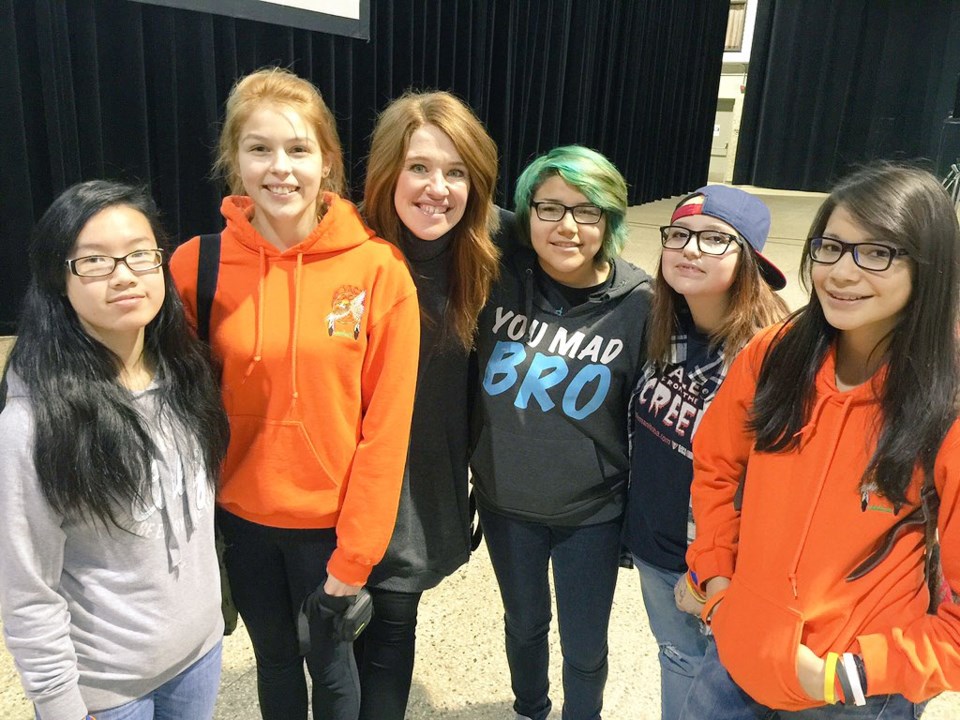Truth and reconciliation: what is it about?
A group from R.D. Parker Collegiate learned more when they attended the launch of the National Centre for Truth and Reconciliation archive at a huge education day in Winnipeg.
“Truth and reconciliation is where the government reveals the past that should not have happened, says sorry to those who have suffered, and hopes for forgiveness,” explained Nicole Landriault.
Landriault and 17 fellow RDPC students were among 1,700 others from all over Manitoba who participated in this historic event two weeks ago, an event organized to inform youth of the history and legacy of residential schools.
Former Thompson resident Kaya Gazan co-emceed the ceremonies, which began with greetings from Justice Murray Sinclair, chair of the Truth and Reconciliation Commission (TRC).
Aware that the TRC issued its 94 calls to action earlier this year, Grade 9 student Paytyn Robinson said, “I hope that the government of Canada doesn’t forget the promise it made to the TRC to do the recommendations … because we are all still waiting for that to happen.”
The students participated in learning activities that used music and “image theatre” to share hard truths and express hopes for reconciliation.
These hopes were echoed by Eugene Arcand, a residential school survivor, when he directly addressed students just after the new national centre’s online database went live.
“You are the generation that’s going to stop the cycle of systemic violence,” Arcand said.
The database at www.nctr.ca is full of documents as well as testimonies given by survivors to help all Canadians understand past policies of assimilation and their intergenerational impacts.
For many of the Thompson students this learning began last year when they did a whole unit about residential schools with their Grade 8 teachers at Juniper School.
As part of the Education for Action project, these students also visited the Canadian Museum for Human Rights and the actual, bricks-and-mortar National Centre for Truth and Reconciliation (NCTR), located at the University of Manitoba.
As Shane Morris, now in Grade 9, remembers it, “We all went outside with a residential school survivor and gathered around a stone turtle for a teaching and healing circle.”
That survivor was Rose Hart, the NCTR’s community engagement co-ordinator. Hart was glad to see the Thompson students back at the Nov. 4 event to continue their journey.
The students were accompanied by School District of Mystery Lake (SDML) superintendent Lorie Henderson, who was proud of her delegation. “These are our future leaders,” she said.
Also supporting the students were SDML’s culturally proficient education consultants Ron Cook and Loretta Dykun, and RDPC teachers Ryan Barker, Madeline Ponask and Jennifer Williams.
RDPC’s Youth Aboriginal Council and Education for Action students aim to take follow-up steps, such as using the new database to research northern perspectives, sharing their findings with others, and doing social justice actions locally.
This article was submitted by Education for Action project (Block B) at R.D. Parker Collegiate.




